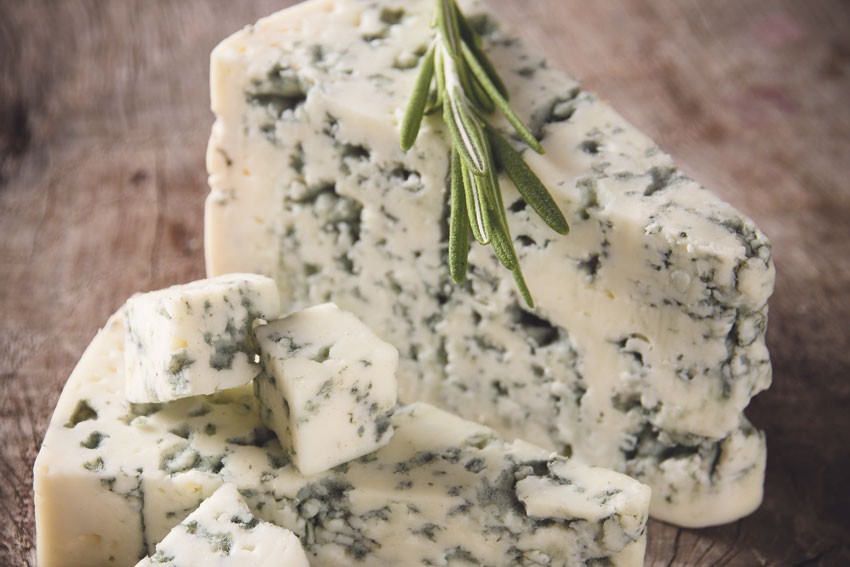Cheese matters: blue cheese

Blue cheese dates back to at least Roman times. It is said that the discovery happened by accident. Wild moulds contaminated cheeses when they were maturing in caves and cellars.
Some of these moulds were unpalatable, however, as time went by cheesemakers began to cultivate the moulds that appealed and introduced them in a more controlled way into cheese making.
Blue cheese can come in many different forms. The very soft and seductive Gorgonzola Dolce (sweet) style or the firmer and sharper style of Gorgonzola, which is referred to as Piccante (Piquant). There is also Stilton, which tends to be firmer and quite pungent and one of my favourites is the melt in the mouth Roquefort. More recently, soft bloomy rind cheeses have also been produced incorporating a blue mould through them, these tend to be quite mild. The rinds can also vary greatly some have a natural rind, many blue cheeses are waxed, others rind less and also vine or other leaf wrapping can be used.
I am often asked how does the blue mould form inside the cheese? Do you inject it into the cheese or do you spike the cheese with copper wires? In fact Penicillin Roqueforti mould spores are added to the milk during making and when given the right humidity, temperature and sufficient oxygen the blue mould will flourish. The process is quite different to other cheeses, as you need to produce curds that allow a matrix of little cavities to form inside the cheese. This is achieved by hours of careful stirring and rolling of the curds, which forms a tough exterior while retaining moisture within each curd piece. The rolled curds need to be very loosely packed into the cheese hoop to enable the cavities to form and not collapse on each other. These little cavities contain oxygen, which the blue mould needs to grow.
In addition cheesemakers will pierce or spike the cheeses several days after making to allow oxygen to enter into the cheese and encourage more of the blue mould to grow. The holes can run horizontally and vertically and generally the number of spikes will be determined by the size of the cheese. The piercing may need to be done several times as the holes have a tendency to close and grow over as the cheese loses moisture. If you look closely at the inside of a blue cheese you can generally see where the spikes have been. A very densely packed, pressed cheese is unlikely to grow any blue mould inside.
Blue cheese is quite unique in its ripening process and is the only cheese that ripens from the inside out. Traditionally whole wheels of blue vein cheese were not sold. The cheeses were cut in half to reassure the cheesemaker that the centre of the cheese had an even distribution of the blue veins and that the cheese was ripening correctly.
We have not seen huge quantities of blue cheese made here in Australia over the years. This is partly due to the risk of making blue cheese in a factory where white mould cheese such as Brie and Camembert are produced. The blue mould spores are quite prolific and will happily settle on a white mould cheese, however this cross contamination is undesirable for the cheese maker. In addition most blues require several months maturing which has a tendency to be less attractive for many small producers.
We have been busy at Woodside making a blue in the Gorgonzola Piccante style using Jersey Milk over the winter months while our goat milk supply is low. We are all very pleased with the result and look forward to a Christmas release, some of the cheeses will be around six months old and tasting very sophisticated. My Australian favourites are Adel Blue, Milawa Blue and Jindi Blue.;
Blue cheese is one of the most exciting cheese styles to make. It is also exceptional on a cheese board with other cheeses or simply on its own with a variety of sweet accompaniments, rye bread and a dessert wine. A good blue in a risotto or crumbled over a salad of rocket and pear is a classic combination. Collectively blue cheeses offer a broad range of tastes, textures and flavours waiting to be explored.
Kris Lloyd is Woodside’s Head Cheesemaker woodsidecheese.com.au